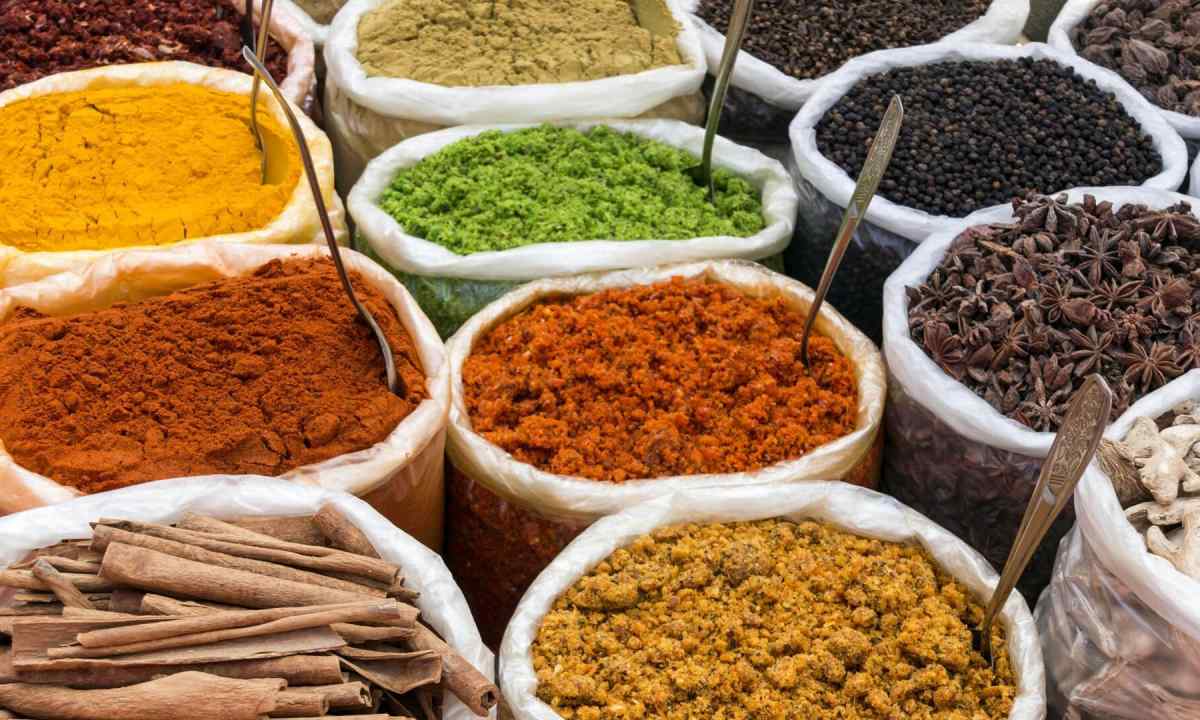Even on the small site it is possible to allocate small bed under spicy herbs. It does not demand special care, but you will be all the year round provided with useful grasses.
Chaber
The chaber tastes like thyme, but it is more burning. Will add taste of salads, meat and fish dishes, sauces and marinades. It is good to add this spice to tea leaves. In traditional medicine the chaber is applied as antiseptic, spazmolitichesky and astringent.
As seasoning young leaves are used, however for the winter it is possible to dry up and crush all bush except for root.
Chaber loves heat and light, does not transfer frosts. Surely there has to be thinning and timely application of fertilizers. Collect grass at the beginning of blossoming.
Lavender
Besides beautiful exterior and great aroma, plant richly essential oils. It is often applied in cookery. The dried-up flowers of lavender have slightly bitterish taste: grate with them chicken before roasting, use at preparation of salads and jelly.
The lavender loves light and heat therefore before it grew up generally in the south. Now selectors have removed the new grades resistant to climate of the Midland. Lavender – fine plant for bed. Also it can be grown up in containers and suspended cachepots. Flowers of lavender collect at the very beginning of its blossoming.
Oregano (marjoram)
The pronounced aroma of this spice will be highly appreciated by admirers of the Mediterranean kitchen. It is excellently combined with fried fish, cheeses, impacts excellent relish to vegetable oils. Is suitable for preparation of pizza and paste.
Oregano it is undemanding to cultivation conditions, prefers warm, sunny weather. Does not love wind and mineral fertilizers. Easily grows on one place up to 5 years. Leaves of oregano can be cut off as required.
Thyme
In the people it is called the Bogorodsk grass. It is low (up to 35 cm) long-term bush with rigid leaves. It has pleasant lemon aroma and burning taste. Spice impacts juicy relish to meat dishes.
In leaving he is not choosy at all. Transfers drought easier, than excessive moisture. 2 times during the season cut off bushes – in June and August.
Rosemary
Represents long-term bush with green leaves and blue colors. The taste – sharp, spicy has strong sweet aroma. It is applied in cookery as fresh, and in a dry form to fish, meat dishes, soups, salads, marinades and pastries. It is perfectly combined with cheese and potatoes.
Rosemary can be grown up in the open ground, but at the same time he demands special care. Prefers the neutral or alkaline soil, heat, light and regular watering.
In the medical purposes the grass is collected during the first blossoming at the beginning of May, in food and for preparation for the winter – from June to August.
Marjoram
Represents perennial grassy plant. It is applied in cookery to preparation of soups, salads, fish and vegetable dishes, sausages and also liqueurs and fruit liqueurs.
In traditional medicine it treat respiratory and digestive systems. Tea with marjoram possesses the calming action.
The plant loves sandy and loamy soils, sunlight, does not transfer windy weather. It is necessary to water, introduce in due time fertilizers, to weed and loosen the soil. Leaves of marjoram cut off two times during the season, then dry and crush.
For landing of spicy herbs do not use the earth for flowers. As a part of ideal soil there has to be mineral sand and lime.
